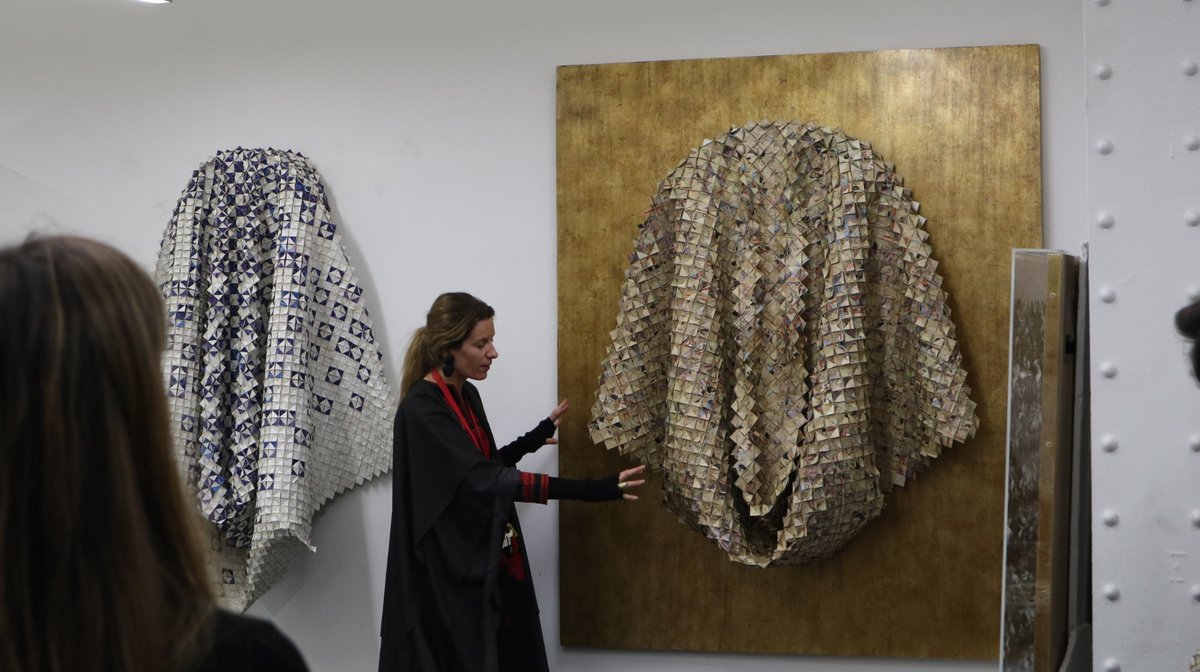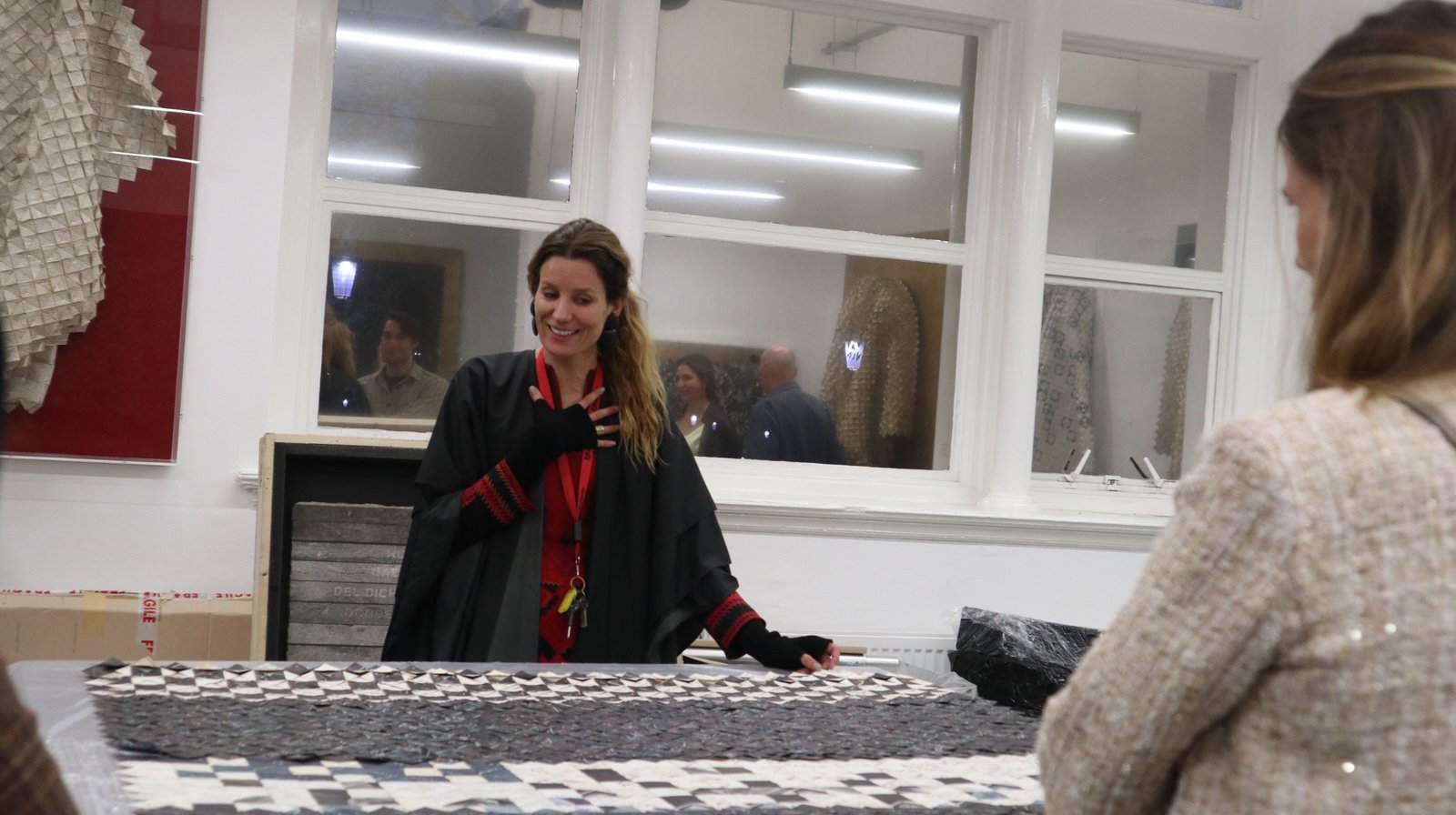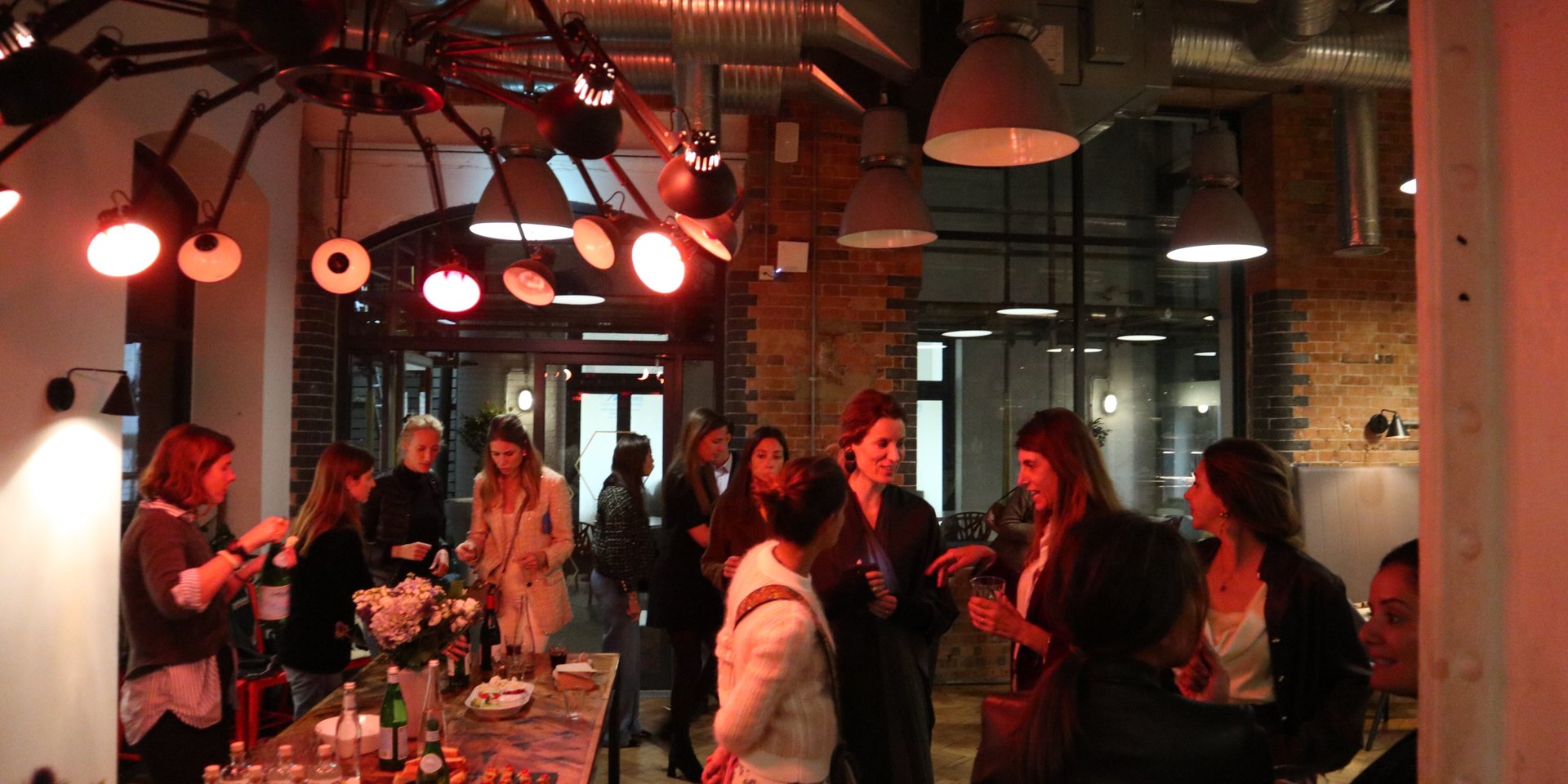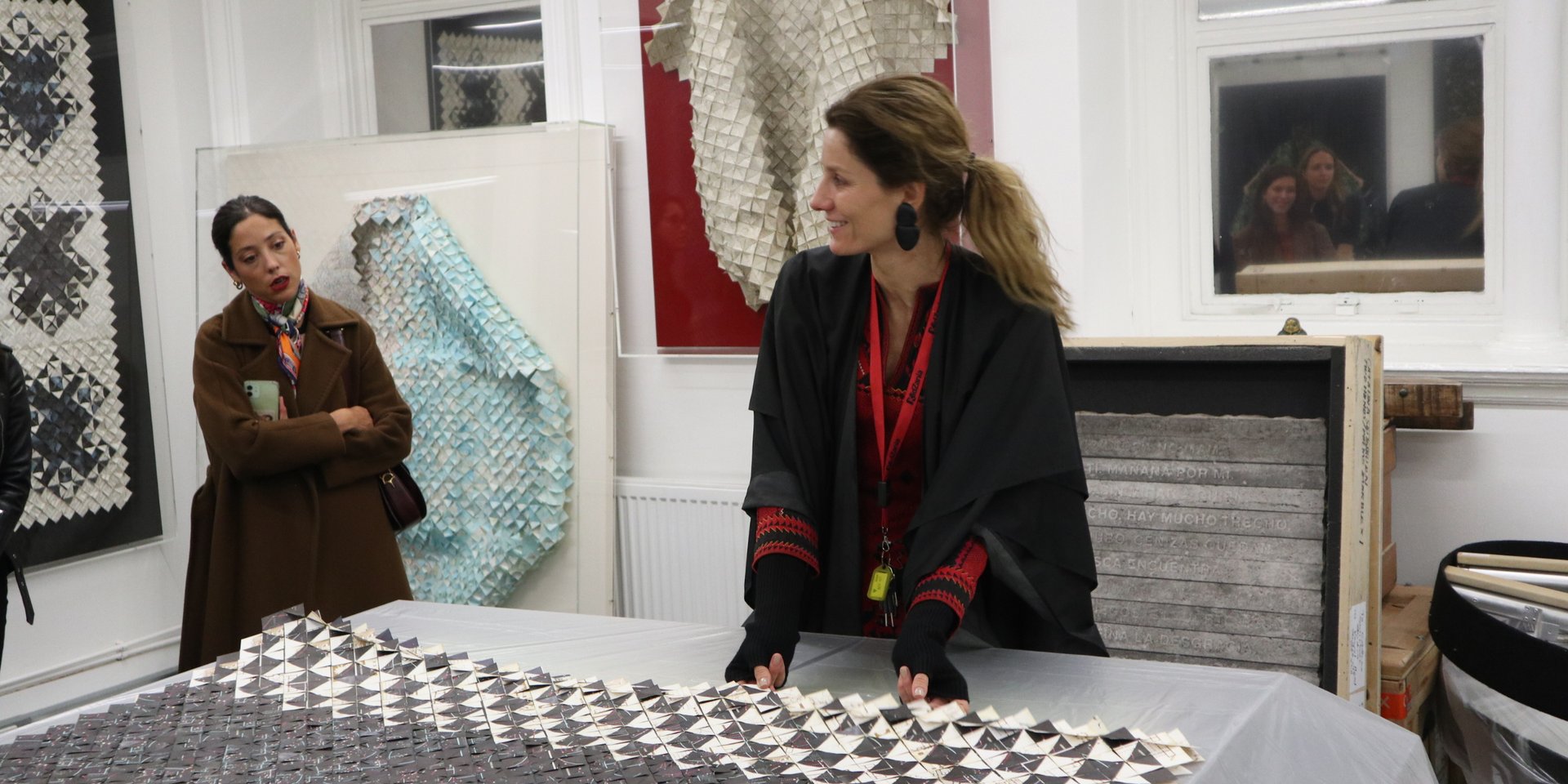Catalina Swinburn
Studio Visit & Artist Talk

Catalina Swinburn in her studio
Courtesy the artist
Catalina Swinburn's sculptural and performative practice weaves vintage documents of displaced patrimonial treasures, or musical scores of operas and geopolitical maps.
Swinburn revitalises ancestral rituals related to sacred places, ancestral geography and original memory.
Swinburn's work translates into key messages and universal concerns such as: sustainability, identity, gender equality and globalisation underlining the connections of the Global South throughout history.
The use of weave and vintage documents are used by her as a vital and dynamic language for raising awareness both physically and conceptually while aiming to strengthen the integration between various communities from the Global South in making reference to female resilience.
Swinburn operates on a shifting border between cult and artistic practice. Her exploration of different visual media –video, installation, photography and performance results in often metaphoric and symbolic manipulations, which challenge reality as a representation of a world the artist is living in. Her practice reflects her identity as a female Latin American artist in an era with a multiplicity of encounters and realities.

Catalina Swinburn in her studio
Courtesy the artist
“Textiles are among the most visible signs of sacred space and sacred roles.
Cloth has always been an alternative discourse.”
In collaboration with HSH Property Ltd and sponsored by MarGin
CATALINA SWINBURN
Catalina Swinburn was born in 1979 in Santiago and lives and works between London and Buenos Aires.
Swinburn's work can be found in prominent collections internationally, including the Pilar Citoler Foundation, Cordoba, Spain; Balanz Capital Collection, Buenos Aires, Argentina; Petitgas Collection, London, UK; Latin American Art Collection, Artnexus, Bogotá, Colombia; CCU Art Collection, Santiago, Chile; ICC Contemporary Institute of Culture, Sao Paulo, Brazil; Arte Al Dia Collection, Miami, FL, USA; Rosenblum Foundation, Buenos Aires, Argentina and Permanent Public Intervention, Vitacura Parks, Santiago, Chile.
Selected solo exhibitions include: Archaic Contingency, Selma Feriani Gallery, Cromwell Place, London, UK (2020); Narratives of Displacement, Selma Feriani Gallery, Tunis, Tunisia (2018); La Frontera Perfecta, Centro Cultural Matta, Buenos Aires, Argentina (2016); Fissures, Selma Feriani Gallery, Sidi Bou Said, Tunisia (2016); Arqueologica Anticipada, Isabel Aninat Gallery, Santiago, Chile (2013); Indulgences, Selma Feriani Gallery, London, UK (2012); Utopia Installation, Farm Street Church, London, UK (2012); Paraiso Perdidio, Fundacion Collahusi, Iquique, Chile (2011); Lujoso Silencio, Cecilia Gonzalez Gallery, Lima, Perú, (2011); Status Quo, Sala de Arte CCU, Santiago, Chile (2010); Lugares Comunes, Project Public Space, Vitacura, Santiago de Chile, (2008); No Hay Peor Ciego, Que El Que No Quiere Ver, Isabel Aninat Gallery, Santiago, Chile (2008); In Contemplation, 5006 Gallery, Buenos Aires, Argentina (2007); Piezas de Colección, Isabel Aninat Gallery, Santiago, Chile (2005); In Memoriam 12.05.04-05.06.04, Die Ecke Gallery, Santiago, Chile (2004); In Memoriam, Animal Gallery, Santiago, Chile (2004); Obituario, Animal Gallery, Santiago, Chile (2004); Memoria Velada, Animal Gallery, Santiago, Chile (2002) and En Memoria, Isabel Aninat Gallery, Santiago, Chile (2002).

Catalina Swinburn stands in front of Das Lied von der Erde (The Song of the Earth) by Gustav Mahler, 2018/2019, a woven paper piece made of music score pages using Chinese poetry by Li Bai, Meng Haoran, Qian Qi & Wang Wei of the Tang Dynasty.
230h × 180w × 55d cm
Courtesy of Catalina Swinburn Studio and Selma Feriani Gallery


